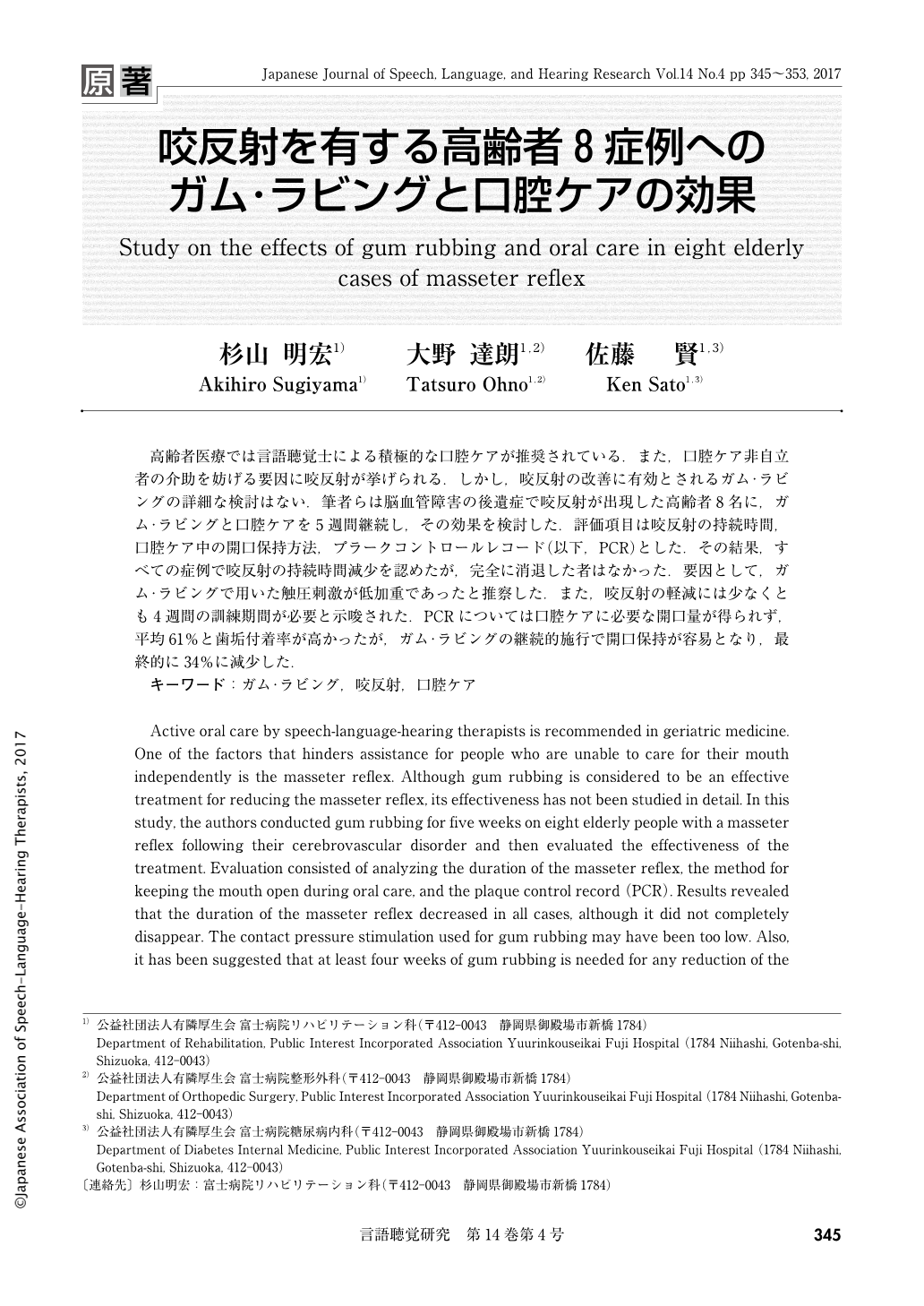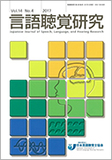Japanese
English
- 有料閲覧
- Abstract 文献概要
- 1ページ目 Look Inside
- 参考文献 Reference
高齢者医療では言語聴覚士による積極的な口腔ケアが推奨されている.また,口腔ケア非自立者の介助を妨げる要因に咬反射が挙げられる.しかし,咬反射の改善に有効とされるガム・ラビングの詳細な検討はない.筆者らは脳血管障害の後遺症で咬反射が出現した高齢者8名に,ガム・ラビングと口腔ケアを5週間継続し,その効果を検討した.評価項目は咬反射の持続時間,口腔ケア中の開口保持方法,プラークコントロールレコード(以下,PCR)とした.その結果,すべての症例で咬反射の持続時間減少を認めたが,完全に消退した者はなかった.要因として,ガム・ラビングで用いた触圧刺激が低加重であったと推察した.また,咬反射の軽減には少なくとも4週間の訓練期間が必要と示唆された.PCRについては口腔ケアに必要な開口量が得られず,平均61%と歯垢付着率が高かったが,ガム・ラビングの継続的施行で開口保持が容易となり,最終的に34%に減少した.
Active oral care by speech-language-hearing therapists is recommended in geriatric medicine. One of the factors that hinders assistance for people who are unable to care for their mouth independently is the masseter reflex. Although gum rubbing is considered to be an effective treatment for reducing the masseter reflex, its effectiveness has not been studied in detail. In this study, the authors conducted gum rubbing for five weeks on eight elderly people with a masseter reflex following their cerebrovascular disorder and then evaluated the effectiveness of the treatment. Evaluation consisted of analyzing the duration of the masseter reflex, the method for keeping the mouth open during oral care, and the plaque control record (PCR). Results revealed that the duration of the masseter reflex decreased in all cases, although it did not completely disappear. The contact pressure stimulation used for gum rubbing may have been too low. Also, it has been suggested that at least four weeks of gum rubbing is needed for any reduction of the masseter reflex. Prior to intervention, it was difficult to keep the mouth open enough for oral care and the average plaque attachment rate was as high as 61%. However, after five weeks of gum rubbing, patients found it easier to keep their mouth open and the plaque attachment rate decreased to 34%.

Copyright © 2017, Japanese Association of Speech-Language-Hearing Therapists. All rights reserved.


